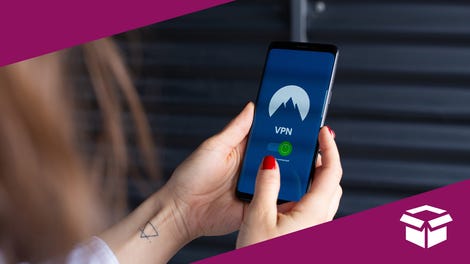Virgin Galactic appears to be one step closer to resuming its space tourism services. The company announced today a successful suborbital test of the VSS Unity spaceplane and hopes to begin rocket-powered spaceflight tests in the coming months.
According to a press release from Virgin Galactic, VSS Unity completed its final glide test during a flight this morning in New Mexico. During the test, VMS Eve took off from Spaceport America with VSS Unity tucked between its twin fuselages at 8:35 a.m. ET. After reaching an altitude of 47,000 feet (14.3 kilometers), Eve released Unity at 9:47 a.m. ET, with the spaceplane landing back at Spaceport America nine minutes later.
Advertisement
Virgin Galactic is not to be confused with sibling company Virgin Orbit, which is also owned by British billionaire Richard Branson. Virgin Orbit, which declared Chapter 11 bankruptcy earlier this month, was in the business of providing satellite launch services; the company’s financial troubles are in part due to a single, pesky, $100 filter that caused a rocket crash, destroying seven payloads in the process. Last month, Virgin Orbit suspended its operations and furloughed most staff while trying to secure an investor to bail it out of its financial woes. After nearly closing on a $200 million rescue deal from Matthew Brown—an investment offer that may have been disingenuous—Virgin Orbit extended the staff furlough and continued pausing its operations before filing for Chapter 11 bankruptcy earlier this month.
While Virgin Galactic says that the data from this test flight will be analyzed over the coming weeks, the next Unity mission should be a rocket-powered test some time before the end of the second quarter of the year. Virgin Galactic said on Twitter this afternoon that these upcoming spaceflight tests will be used to “assess the customer experience and ground-based testing” before the company re-opens up spaceflight for commercial service.

ON SALE NOW
Two of Our Favorite VPNs
Protect your private data
We share and access a ton of private data every day which can cause some big problems if that info gets into the wrong hands.
Advertisement
“Releasing Unity for a glide flight today is one of the final steps towards commercial spaceline operations,” said Mike Moses, president of Spaceline Missions and Safety at Virgin Galactic, in the press release. “The data from this validation flight will clear the way for our return to space and, ultimately, lead to the launch of commercial service.”
The test comes after a nearly two-year-long pause of VMS Eve’s suborbital flights. Virgin Galactic resumed VMS Eve flights this past February to test an overhaul of the four-point launch pylon that the mothership—aptly named after Branson’s late mother, Eve—uses to carry spaceplanes to high altitude. Before this test, the last time Eve took to the skies was when the aircraft flew from Spaceport America in New Mexico to Mojave, California in October 2021. Virgin Galactic also hit some turbulence with Unity in February after stockholder Yousef Abughazaleh filed a lawsuit in Delaware alleging that the Branson and company executives lied about how good and safe its spaceplanes were in a bid to inflate Virgin Galactic’s stock price.
Advertisement
Future spaceflight tests have been a long time coming for Virgin Galactic, which received clearance almost two years ago from the FAA to haul passengers into space. Branson did wind up getting to hitch a ride to a height of 50 miles (80.4 kilometers) in July 2021 during the highly-anticipated billionaire space race between him, Elon Musk, and Jeff Bezos.
If we want to be nitpicky—and we do—it can be argued that Branson didn’t actually make it to space. The internationally recognized boundary, known as the Karman Line, resides 62 miles (100 kilometers) above the surface, but that boundary is not a hard and fast rule. But Branson’s achievement, being the first billionaire to reach the edge of space, still counts for something. Right?
Advertisement
For more spaceflight in your life, follow us on Twitter and bookmark Gizmodo’s dedicated Spaceflight page.
Services Marketplace – Listings, Bookings & Reviews